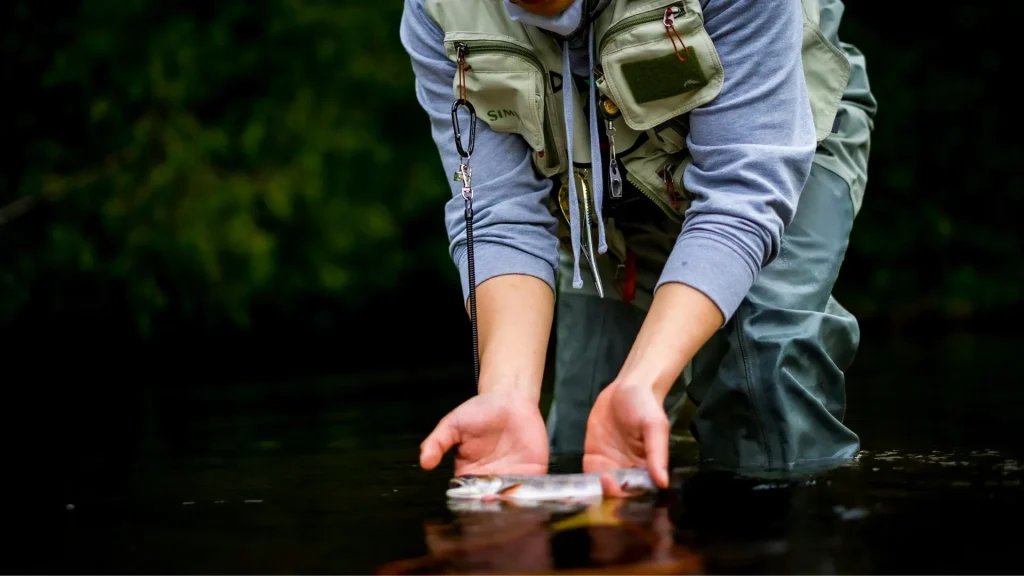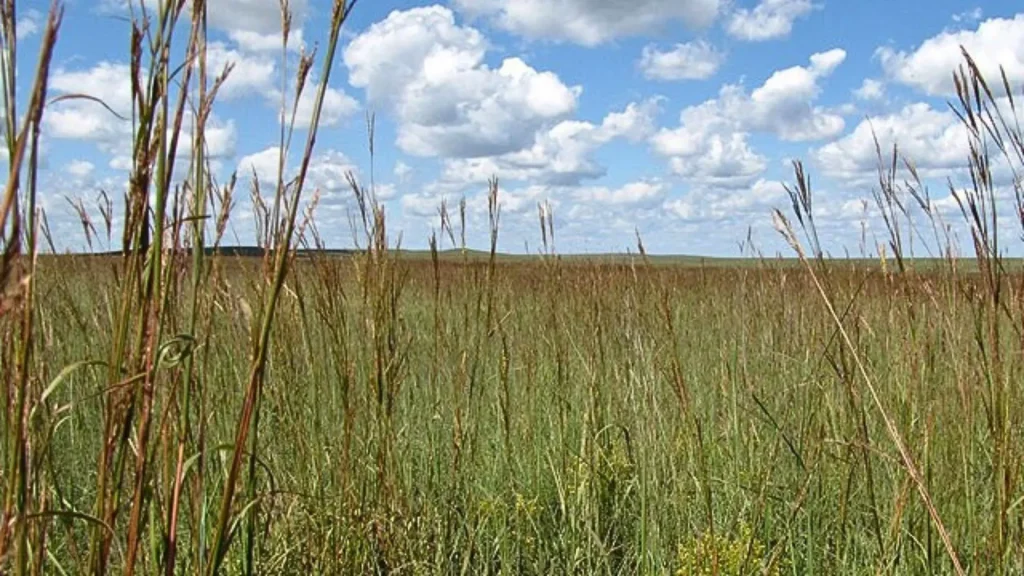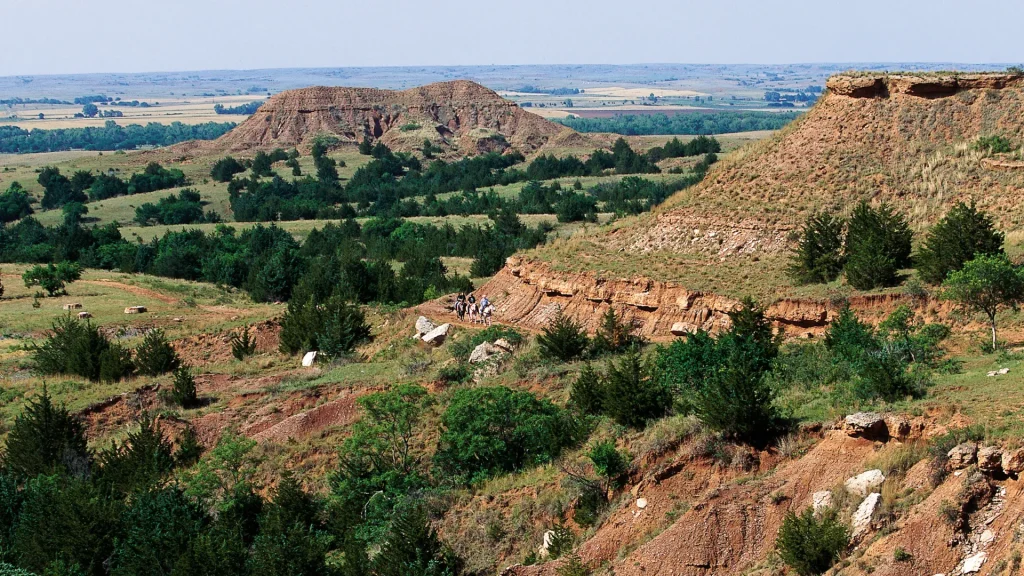



Many travelers struggle to find things to do as they cross the Great Plains. Kansas, Nebraska, Illinois, and Iowa tend to get very little love from adventurers. But today, we want to share about a hidden gem in Manhattan, Kansas. Pillsbury Crossing is considered one of the eight wonders of Kansas. So let’s dive in and learn more about this scenic place in America’s Heartland!
Pillsbury Crossing is a low-water river crossing along Pillsbury Crossing Lane outside Manhattan, Kansas. There’s a 100-foot stretch of road where vehicles drive through a few inches of running water.
There’s also a 60-foot-long waterfall that cascades over natural limestone rock. It’s only five feet high, but its stretch across the river is picturesque. You can reach Pillsbury Crossing via I-70, which runs from east to west across the central part of Kansas.
Take exit 316 and drive five miles north on Deep Creek Road. From here, you’ll turn onto dirt roads: first on Pillsbury Crossing Road and then to Pillsbury Crossing Lane. The drive is less than an hour west of Topeka.
From Manhattan, you won’t need to get on I-70. Instead, take K-177 to Deep Creek Road where you’ll turn onto the dirt roads mentioned above. Pillsbury Crossing is about 15-20 minutes from Manhattan.
Pro Tip: Be sure to check out this unbelievable crystal lake cave if you’re going through the Great Plains!
Pillsbury Crossing was named after Josiah Pillsbury, a pioneer and politician who settled in Manhattan. Originally from New Hampshire, Pillsbury came to Kansas in 1854. The following year, he located the Zeandale colony in what is now Riley County.
He was heavily involved in the community, serving as a member of the Topeka constitutional convention, a delegate to the Leavenworth constitutional convention, the owner and creator of the Manhattan Independent newspaper, the postmaster, and the county surveyor.

The Pillsbury Crossing Wildlife Area is one of the eight wonders of Kansas because of the natural water crossing and long, broad waterfall. This landmark is a popular fishing spot for locals. Anglers enjoy casting for catfish, spotted bass, largemouth bass, bullhead, and carp. Outdoor enthusiasts also enjoy canoeing, kayaking, and boating upstream during normal stream flow. You can only go about ½-mile, but it’s a beautiful area to embrace the natural landscape of Kansas.
While you likely won’t spend a day at Pillsbury Crossing, it’s an excellent option for a drive one afternoon if you’re traveling near Manhattan, Kansas. We have a few other scenic locations that are also worth visiting as you venture around the Sunflower State.
The Flint Hills in eastern Kansas features bands of hills that were once places for cattle ranchers because the land wasn’t suitable for farming. Much of this area is composed of limestone and shale, with prehistoric fossils of sea creatures since the land was once covered by the sea.
You can learn more about the history, geology, and preservation of the Flint Hills by visiting the Discovery Center in Manhattan. The Flint Hills Scenic Byway passes through the region, providing easy access to this beautiful landscape.

The Tallgrass Prairie National Preserve is located in the Flint Hills. The tallgrass prairie once covered over 170 million acres in North America, but sadly only about 4% remain. The National Park Service helps protect nearly 11,000 acres, a significant remnant of the once vast tallgrass prairie ecosystem.
The visitor center is two miles north of the U.S. Highway 50 and K-177 intersection. The Tallgrass Prairie National Preserve is about an hour south of Pillsbury Crossing.
The Arikaree Breaks in Cheyenne County, Kansas are a two-to-three-mile-wide break of rough terrain between the plains and the river basins. The nearly vertical cliffs were formed by erosion over time. It’s a stark contrast to the tallgrass prairie that defines much of the Kansas landscape.
The Arikaree Breaks look more like the Badlands of South Dakota with deep ravens and gullies and rare native plants that only grow in this part of the state. The entire area is about 36 miles long, and several public roads provide access for visitors to view this rugged wonder.

The 42-mile-long Gypsum Hills Scenic Byway travels through the grasslands of Kansas, providing beautiful vistas of the Gypsum Hills. You could also book a trail ride via horseback to dive into the rugged terrain of south-central Kansas. You’ll likely see wildflowers, birds, cattle, and other wildlife along the drive.
But the highlight of this region is the hills themselves. Sometimes called the “Red Hills,” the Gypsum Hills are red, much like the Sedona area in Arizona, because of the iron oxide composition.
Finally, the Glacial Hills Scenic Byway is northwest of Kansas City in the far eastern section of the state. It runs 63 miles from the border of Nebraska to Leavenworth, where you can explore the historic fort. The byway travels along the Missouri River, providing scenic views of the hills carved out of vast glacial deposits. This area is also fertile farmland and is home to one of the famous Pony Express routes.
Pillsbury Crossing is a hidden gem in Manhattan, Kansas. But there’s also more to enjoy in the Sunflower State. Venture south and explore the tallgrass prairie or drive east to see the stunning hills carved by ancient glaciers. While Kansas doesn’t have the deep canyons of the Southwest or the towering peaks of the Rockies, it’s still a place of scenic beauty.
Where will you go when you visit the Sunflower State?

